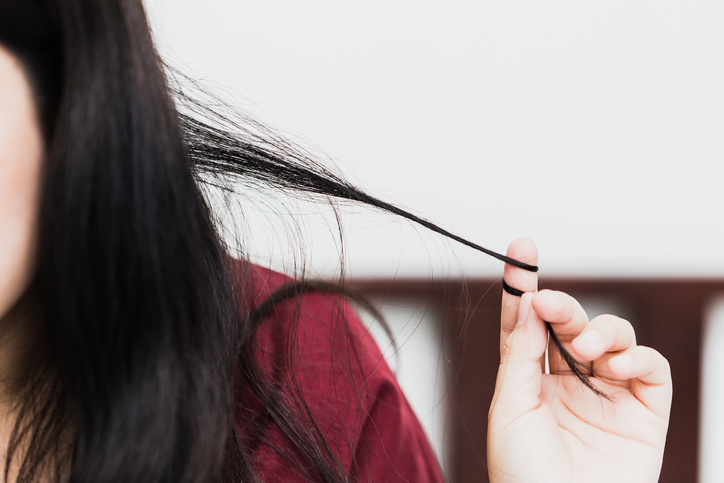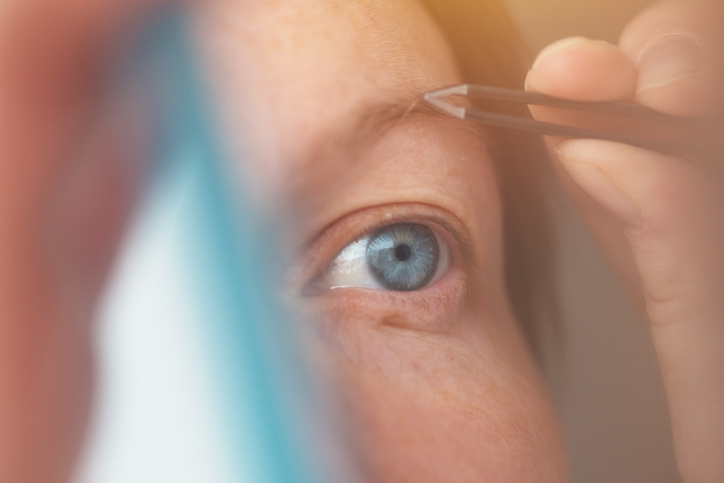 Trichotillomania involves powerful compulsions to pull hair from one’s body. A person will experience hair loss and significant distress around the hair pulling. They may try to stop the behavior but feel unable to do so. Trichotillomania goes by many names, including hair-pulling disorder, TTM, or trich.
Trichotillomania involves powerful compulsions to pull hair from one’s body. A person will experience hair loss and significant distress around the hair pulling. They may try to stop the behavior but feel unable to do so. Trichotillomania goes by many names, including hair-pulling disorder, TTM, or trich.
The location from which hair is pulled can vary, as can the severity and the way a person responds to treatment. Treatment options typically include some form of behavioral therapy. The right therapist can help an individual replace hair pulling with healthier behaviors.
WHAT IS TRICHOTILLOMANIA?
Trichotillomania is a condition in which a person repeatedly pulls hair from their body. The most common sites are the scalp, eyebrows, and eyelashes. However, people may also pull hair from their underarms, chest, pubic area, and so on.
The affected area usually displays visible bald patches. If the behavior persists for long enough, the hair loss may become permanent.
Hair pulling may start in one area of the body, such as the scalp, and shift to other areas over time. The behavior may occur in brief periods throughout the day, or it can happen in concentrated sessions which last hours. In general, people with trichotillomania only pull hair when they are alone.
The Diagnostic and Statistical Manual of Mental Disorders (DSM-5) classifies this mental health issue under “Obsessive Compulsive and Related Disorders.” (Previous editions had categorized trichotillomania as an impulse-control issue.) More specifically, trichotillomania is a body-focused repetitive behavior, or BFRB. BFRBs refer to any compulsive and harmful self-grooming behavior, such as nail biting or skin picking.
SIGNS AND SYMPTOMS OF TRICHOTILLOMANIA
Trichotillomania always causes some form of hair loss. Yet people with the condition may work hard to hide the consequences of their behavior. Some individuals may pull hair from a widely distributed area, ensuring no one patch loses too much cover. Others may conceal hair loss with wigs, scarves, or makeup.
Other common signs and symptoms of trichotillomania include:
- Excessive touching, playing with, or pulling hair.
- Feeling tension before pulling hair and relief after pulling it.
- Eating, biting, or chewing the hair after it is pulled out.
- Avoiding situations that could expose bald patches, such as swimming or exposure to wind.
- Anxiety, depression, or a decline in work performance.
- Noticeable changes in social behavior.
Consequences of Trichotillomania
Trichotillomania can cause permanent damage to a person’s hair. Hair may grow thinner, become frailer, or stop growing altogether. Hair loss often causes people to experience shame and humiliation.
Many people with trichotillomania report that hair pulling interferes with their daily lives. Children may be bullied for their hair loss and become socially isolated. Adults may avoid certain activities or struggle to focus on work due to their condition. A survey of 1,700 adults with trichotillomania found:
- 20% avoided vacations.
- 23% had difficulty performing job duties.
- 24% missed school.
In some cases, trichotillomania can even cause medical complications. Some individuals eat their hair after pulling it (trichophagia). This behavior can create lumps of hair blocking the digestive tract (trichobezoars). These lumps cause serious physical problems such as vomiting, anemia, and abdominal pain. They may need to be surgically removed.
WHY DO PEOPLE PULL OUT THEIR HAIR?
Even though trichotillomania often causes physical damage, it is not considered an act of self-harm. People who self-mutilate typically do so to punish themselves or cope with overwhelming emotions. Hair pulling more closely resembles compulsive or addictive behavior.
People with trichotillomania are not always aware they are pulling out their hair. Sometimes it manifests as an automatic behavior, and individuals do not realize they are doing it until they see a pile of hair nearby. Other times, individuals are fully aware and focused on the act of hair pulling. Most people report a mix of both automatic and focused hair pulling.
People with trichotillomania pull out their hair for different reasons:
- Some are seeking a sensation, such as the feel of a hair root popping out of the skin.
- Some are responding to an itching or tingling in their skin near the targeted hair.
- Some are searching for a type of “flawed” hair to remove.
There is rarely physical pain during hair pulling. In fact, most individuals feel relief or pleasure once a hair is pulled out. Trichotillomania often becomes addictive: the more hairs a person pulls out, the more they feel compelled to continue the behavior.
WHAT CAUSES TRICHOTILLOMANIA?
 Research on the potential causes of trichotillomania is still in early stages. Some preliminary studies indicate it may be a neurological condition that is influenced by genetics. People who have family members with BFRBs are more likely to pull out their own hair.
Research on the potential causes of trichotillomania is still in early stages. Some preliminary studies indicate it may be a neurological condition that is influenced by genetics. People who have family members with BFRBs are more likely to pull out their own hair.
One available theory suggests trichotillomania occurs due to hormonal changes. Trichotillomania often begins in puberty, which is when hormone levels change drastically. Children who already pull their hair may develop worse symptoms when they begin menstruating.
Environmental factors such as family stress likely play an important role as well. Hair pulling may be a way to cope with anxiety. The relief individuals feel after pulling their hair may help calm them down. Contrary to older theories, research suggests trauma has very little to do with trichotillomania.
While comorbid mental health issues do not cause trichotillomania, they can exacerbate its symptoms. Up to 60% of people with trichotillomania have another diagnosis. Major depression and excoriation are the most common comorbid issues. Obsessive compulsive disorder (OCD), generalized anxiety, and impulse control issues are also frequently seen alongside hair-pulling behaviors.
HOW COMMON IS TRICHOTILLOMANIA?
Trichotillomania's prevalence is difficult to predict. It is believed to be grossly underreported due to its social implications. The Trichotillomania Learning Center Foundation estimates 2% to 5% of the general public experience trichotillomania.
Trichotillomania typically begins in adolescence with the onset of puberty. Most individuals begin pulling hair between the ages of 9 and 13. However, the condition can sometimes affect children and has been documented in children as young as 1 year of age.
The gender ratios of hair pulling differ by age. In childhood, boys and girls pull their hair at roughly equal rates. But by adulthood, 90% of people who report having trichotillomania are women.
Some researchers believe the gender ratio is not as large as it seems. Men and women may report their symptoms at different rates. Since many men lose hair as they age, male hair-pullers may face less stigma for their bald patches. Thus, they may be less motivated to seek treatment.
If you have trichotillomania, therapy can help you. The right therapist can teach you how to cope with your hair-pulling urges and ultimately stop hurting yourself. Therapy is completely confidential—no one has to know about your condition besides you. There is no shame in getting the help you need.
References:
- Golomb, R., Franklin, M., Grant, J. E., Keuthen, N. J., Mansueto, C. S., Mouton-Odum, S., . . . Woods, D. (2016). Expert consensus treatment guidelines: Body-focused repetitive behaviors [PDF]. Retrieved from http://www.bfrb.org/storage/documents/Expert_Consensus_Treatment_Guidelines_2016w.pdf
- Kaplan, A. (2012, May 14). Psychiatric Times. Retrieved from http://www.psychiatrictimes.com/apa2012/update-trichotillomania#sthash.wg1adAyh.dpuf
- Stein, D. J., Grant, J. E., Franklin, M. E., Keuthen, N., Lochner, C., Singer, H. S., and Woods, D. W. (2010). Trichotillomania (hair pulling disorder), skin picking disorder, and stereotypic movement disorder: Toward DSM-V. Depression and Anxiety, 27(1), 611–626. Retrieved from http://www.dsm5.org/Research/Documents/Stein_Trich.pdf
- Trichotillomania. (n.d.). National Health Service. Retrieved from http://www.nhs.uk/Conditions/trichotillomania/Pages/causes.aspx
- Trichotillomania (TTM). (n.d.). OCD-UK. Retrieved from http://www.ocduk.org/trichotillomania

